Sage is a plants most of us know by name but know very little else. Types Of Sage Plants If you’re looking for an easy herb to grow in your garden, then sage is a perfect choice!
Sage is a great herb for beginners to grow because it can withstand imperfect care. Depending on the type, it is both disease and pest-resistant, and it is great for cooking!
If you want to know more about the different types of sage and what is better for your garden or lifestyle, then read on!
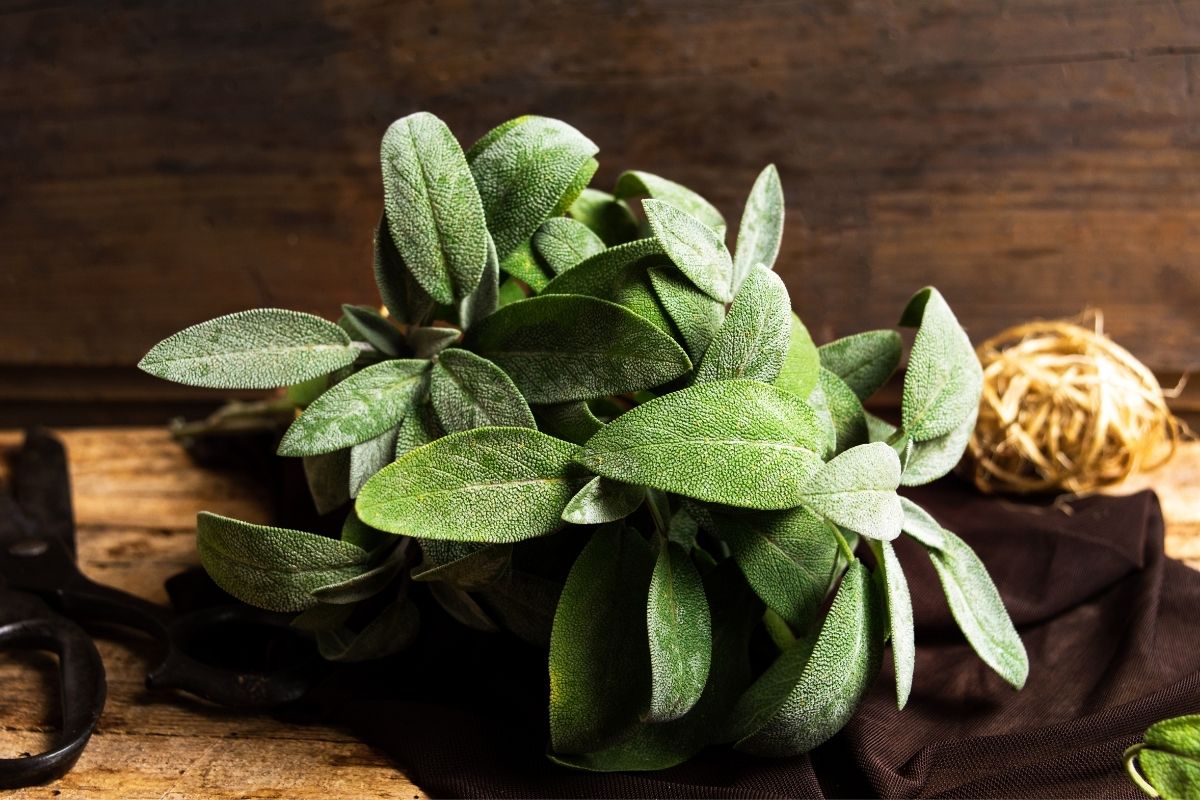
More Information On Sage
Sage comes in many varieties and has different uses. For example, sage is known to have great culinary properties, greatly complementing poultry and pork dishes as well as risotto and squash.
Sage is also known for its decorative qualities, medicinal uses, spiritual value, and makes for a great companion plant.
Additionally, sage comes in many different colors, which signify a different strength or use.
For example, sage that is red or purple is disadvantaged when it comes to diseases and pests compared to its green counterparts.
Green sage is the most common kind, with dark green being loved by cooks and light green preferred by people who want to add some life and color to their garden.
Common Sage

Common Sage is a type of garden sage with both culinary and medicinal purposes. It requires clayey soils, full sun and partial shade, and a raised bed to grow.
To stop pests from accessing and destroying this sage, you should ensure it has good air circulation surrounding it.
If you provide all of these things, then common sage is easy to grow. This is especially true since it is able to withstand harsh climates.
Broadleaf Sage
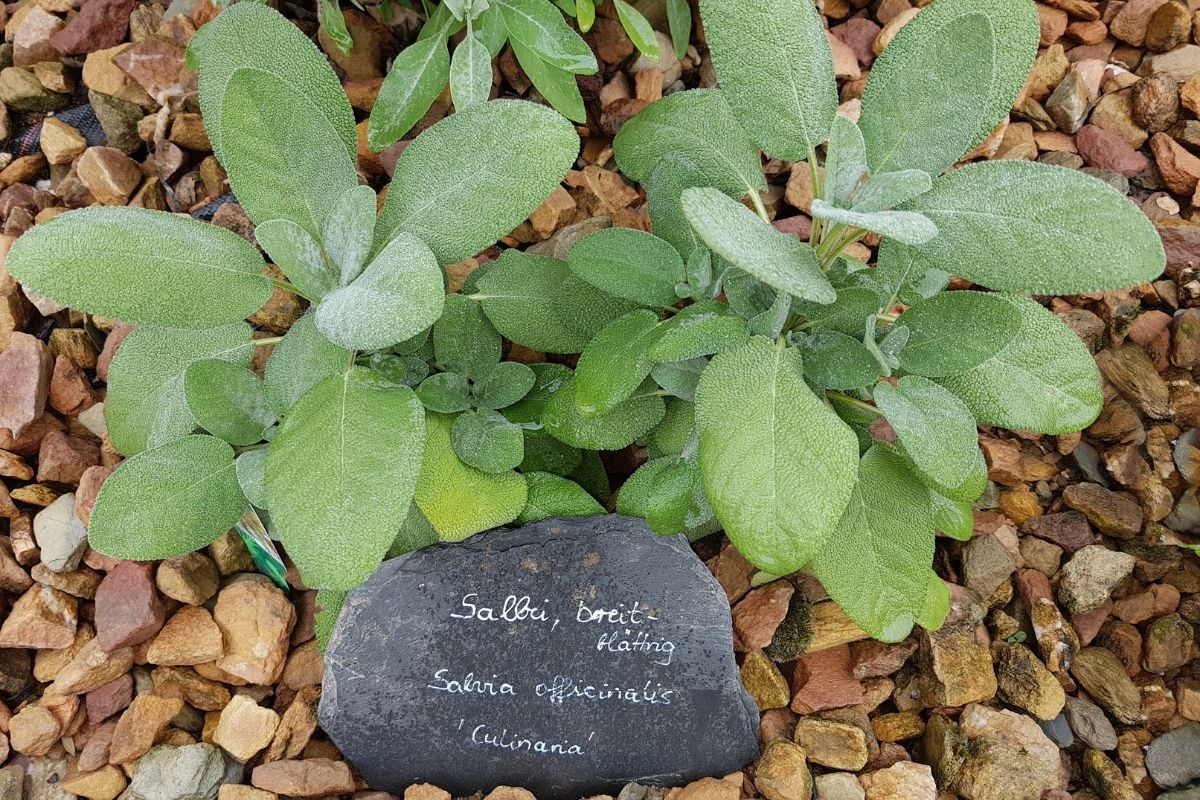
Broadleaf Sage is a type of garden sage with culinary purposes. It is primarily used as a herb to sprinkle onto meals for that perfect final touch, though it can be used for sweet treats, too!
Additionally, it is used to add flavor and pickling to cheese, butter, vinegar, and oils. Broadleaf sage has a mild flavor compared to other sages, so it is suitable even for the fussiest eaters!
Golden Sage
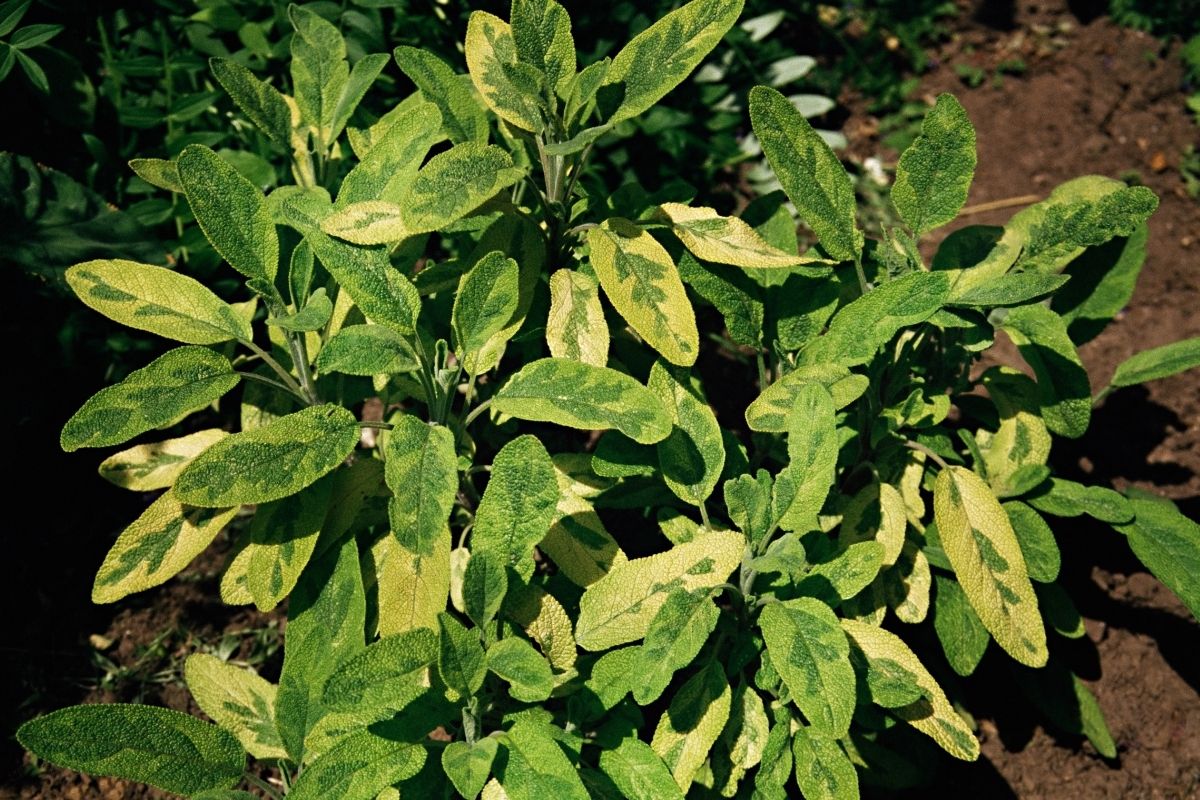
Golden Sage is considered to be less pungent compared to other types of sage, instead having a light citrus flavor. Golden sage is quite difficult to grow.
It is very sensitive to changes in temperature and does not grow well in cold climates. It is also sensitive to light changes, diseases, and pests.
So, you will need to ensure you take great care of this garden sage if you want the best results.
Russian Sage

Russian Sage is considered to be a culinary, medicinal, and flowering plant It has very long periods of blooming, lasting through both fall and winter, and then reseeding itself during the spring.
Russian sage is a very beautiful plant, it can grow to be two ft tall with purple leaves. The flower itself is usually pink or purple, or white.
Additionally, a Russian Sage infusion in tea has treated mild ailments such as coughs, sore throats, and colds. It has been found to relieve some of the swelling in the mucus membranes.
Herbalists even see the value of Russian Sage. This is because it can be beneficial for brittle or dry hair when used as a hair rinse.
Italian Sage
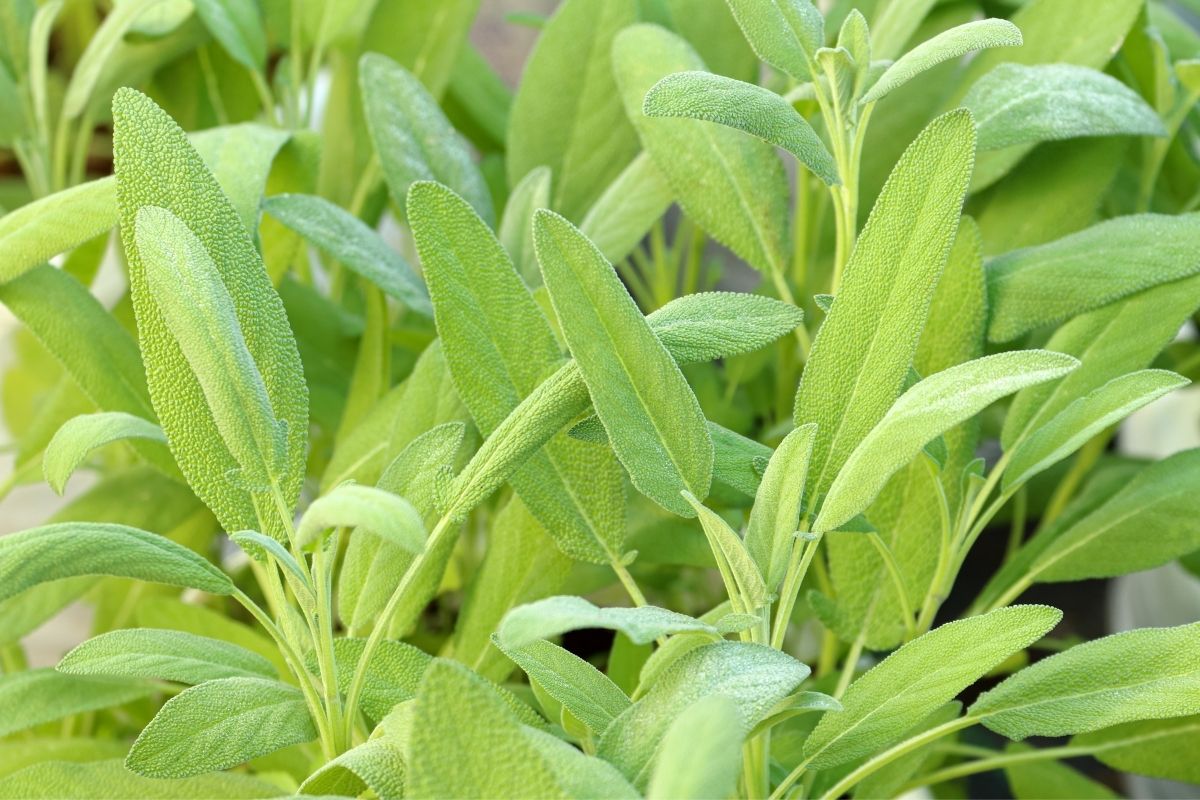
Italian Sage is the perfect garden sage for ornamental use. It has large flowers that are usually violet in color, with wonderful grey leaves. It can grow up to two ft tall.
Greek Sage
Like Italian Sage, Greek Sage’s primary use is for decorative purposes. It is native to the Mediterranean and known for its purple-blue blooms, dark green leaves, slender stems, and is often used in dried flower arrangements and bouquets. Greek sage can grow to be three ft tall.
To grow Greek Sage, you will need to be able to access full sun.
Scarlet Sage

Scarlet Sage is very fragrant, and so is often used as potpourri or as an ingredient in herbal products. They are also harvested to be used in scented items, such as sachets.
Aside from its pleasant fragrance, Scarlet Sage is known for its vibrant purple or red flowers.
This type of sage can grow to be two ft tall. It is a perennial, so during the colder months it needs less water. Please note that this is only the case when the temperature drops below freezing.
Pineapple Sage
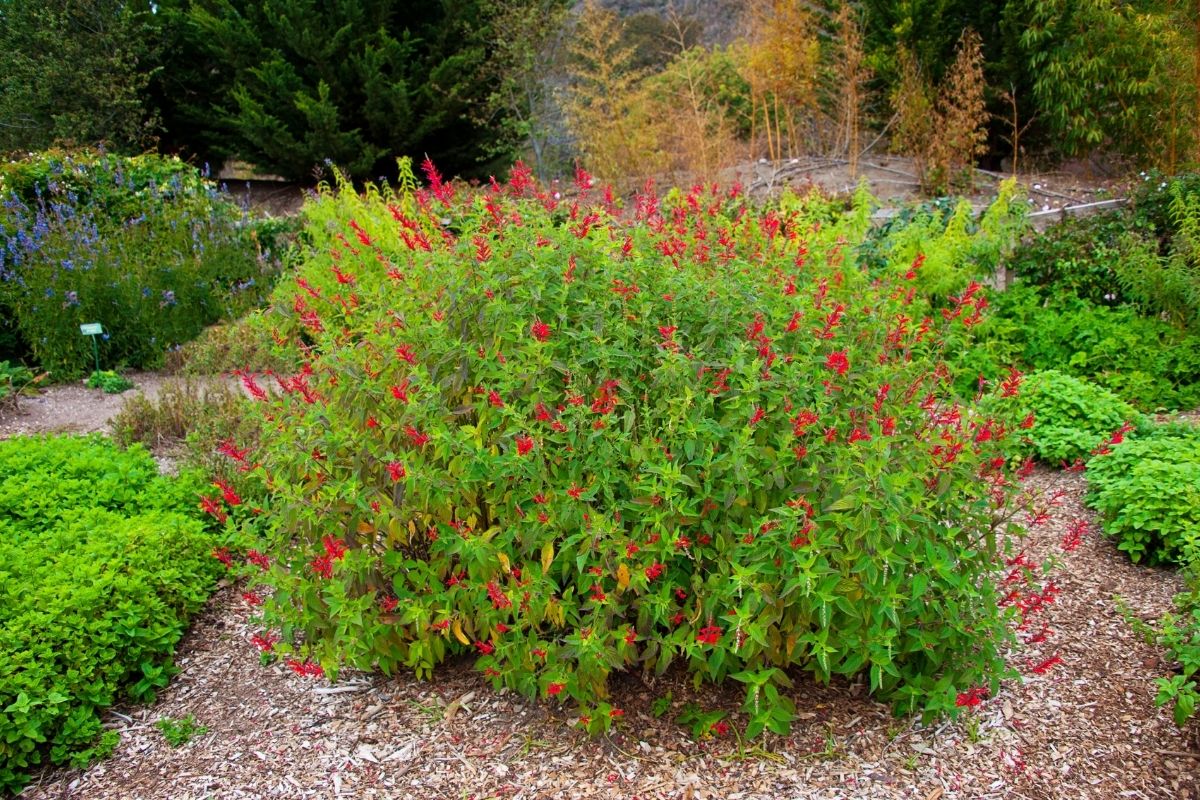
Pineapple Sage is named after the sweet aroma it produces after blooming. It can grow up to four ft tall, with serrated green leaves and little purple blooms. Because of its colors, Pineapple Sage makes for a wonderful decorative plant.
Pineapple Sage blooms during the summer and stays in bloom through fall to winter. Its scent attracts insects such as butterflies and bees to your flower garden.
Pineapple Sage has also proved useful in a small, medicinal capacity. It has been known to aid with indigestion, calming anxiety symptoms, helping you sleep, and reducing the pain from menstrual cramps.
Pineapple Sage can be used in tincture and tea.
White Sage
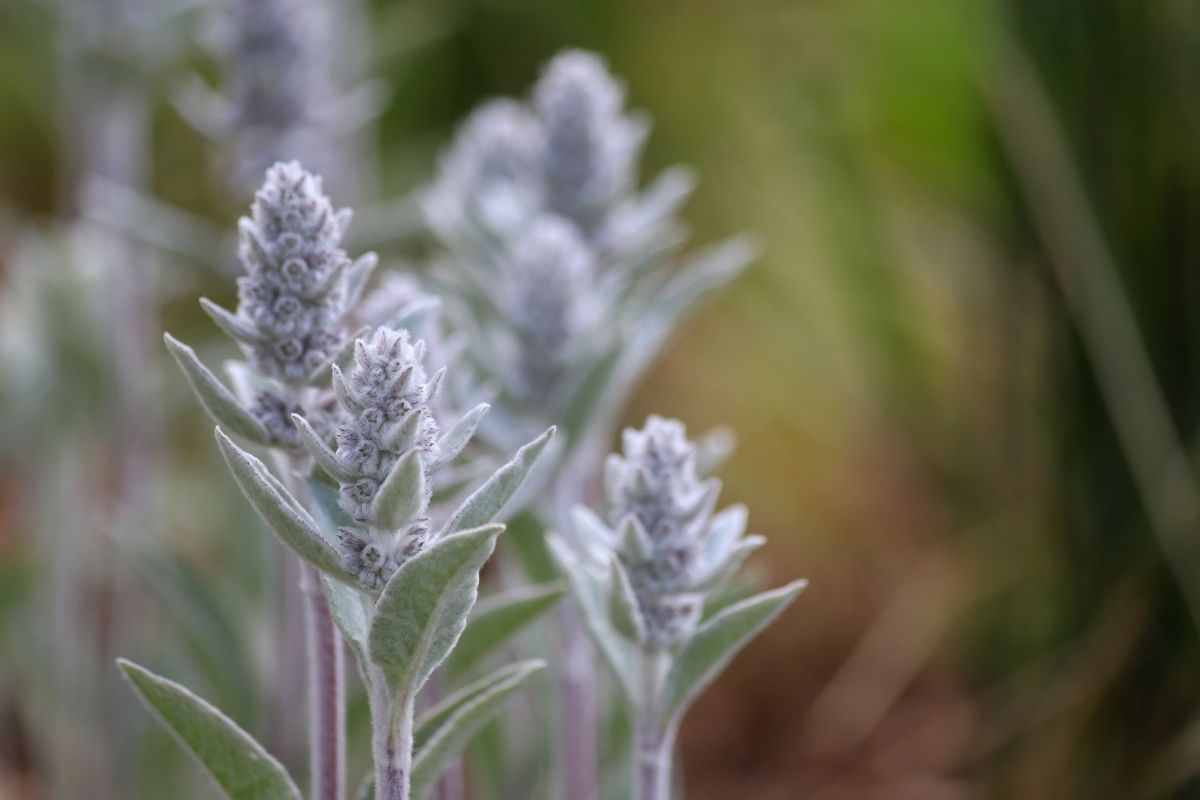
White Sage is native to Mexico and the Southwestern parts of the US. It is the typical sage used for burning. It has ceremonial value for Native Americans.
White sage is usually dried for the purpose of a ceremony and then burned. It produces an aroma similar to pine, with a hint of smoke.
While there is little research and no proven medical benefits of burning sage, it is considered to be an act of spiritual cleansing.
Burning sage is believed to help relieve people of negative emotions. It has been used by Native Americans to promote wisdom, healing, and to cleanse a space or person.
Mealycup Sage
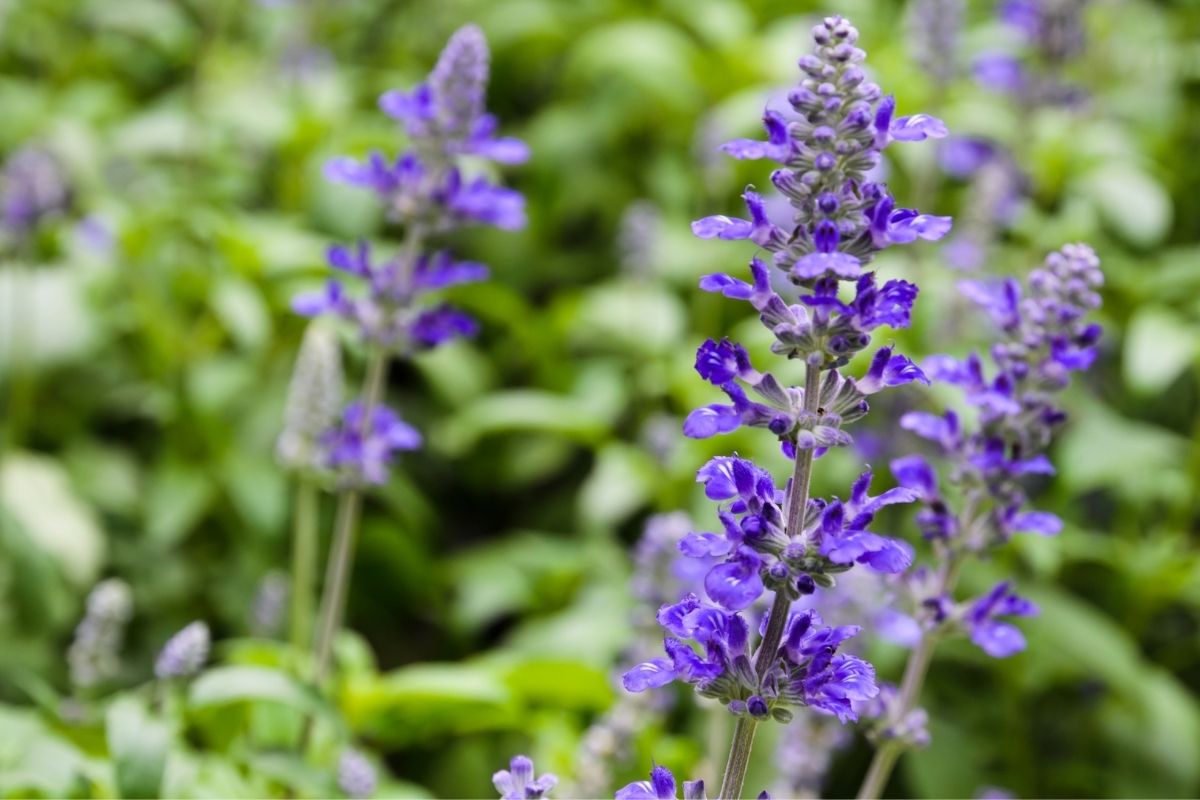
Mealycup Sage is native to the desert areas of New Mexico and Texas. This garden sage has many uses. It is used in cooking and is known to have a similar taste to tarragon.
It also has some medicinal value, being used by herbalists to treat diarrhea, reduce stress, and soothe bad stomachs.
Mealycup Sage needs to be planted in a place that gets full or partial sun. It should be watered frequently – but take care not to overwater it!
The soil must be slightly dry in between watering or you risk killing the plant.
During the winter, you can reduce the amount of water the sage gets all together, just don’t let it wilt!
When in bloom, Mealycup sage produces beautiful blue-lilac, pink, or white flowers.
Mexican Bush Sage
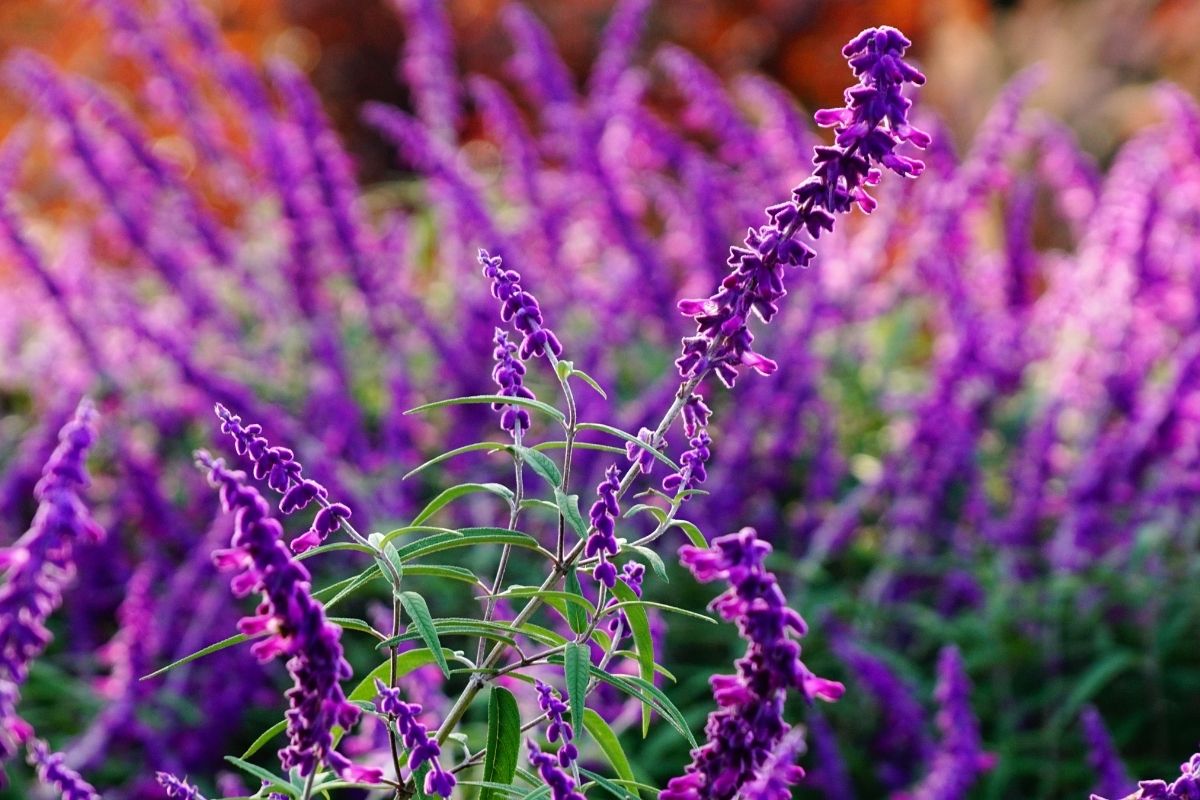
This type of sage is native to Central America and Mexico. It has dark green foliage and little purple flowers. Mexican Bush Sage will bloom during the summer and stay in bloom until fall.
It will grow to around two to three ft tall. This garden sage has large bushes, so you may want to pinch them back every few years around springtime if you want to use them for decorative purposes.
Aside from its decorative purposes, Mexican Bush Sage is also used as a border plant. This is because it can grow on slopes and is not affected by hot weather provided it is frequently watered.
This perennial also finds use in tea (the leaves) or for drying purposes.
Berggarten Sage
This garden sage blooms during the summer, producing beautiful blue flowers. Its leaves can be used throughout the summer for culinary purposes which ensures the plant remains healthy.
The primary use of Berggarten Sage is ornamental, thanks to its beautiful green-grey leaves. It can grow up to one to two ft tall.
This sage will grow bushier if you pinch it back every few years during the spring.
Woodland Sage
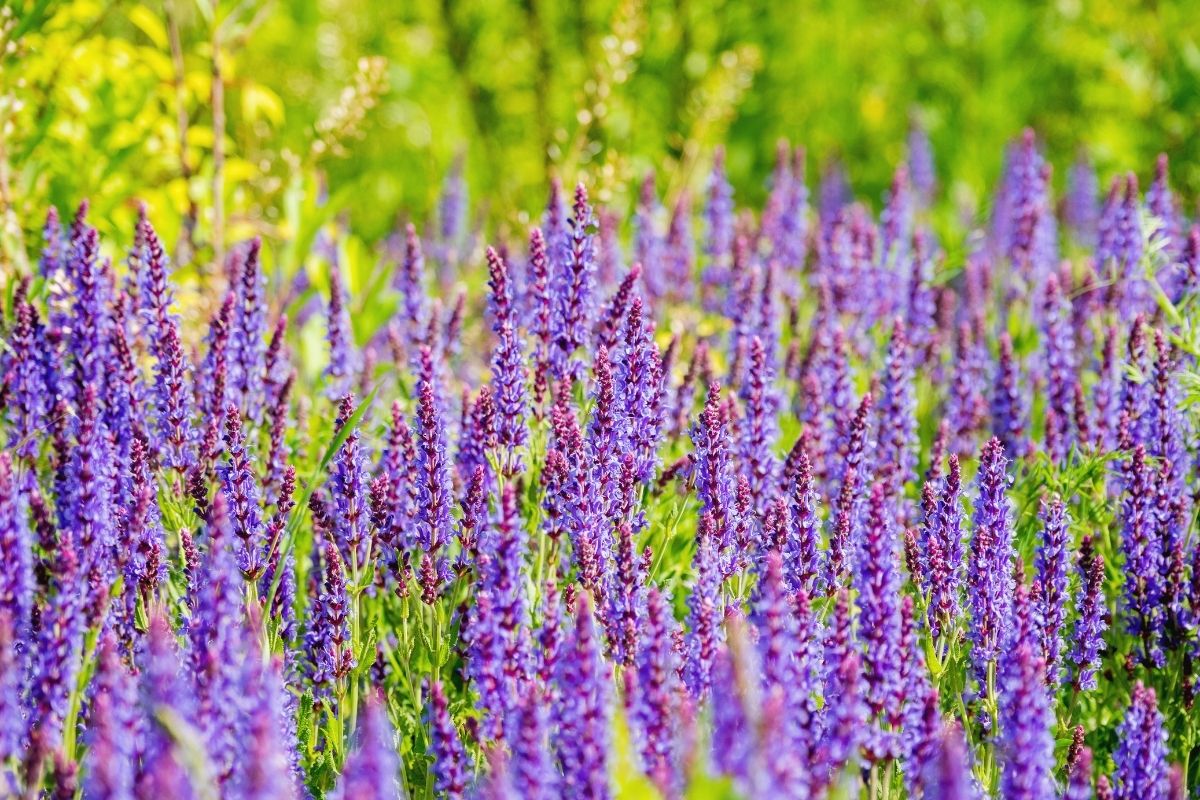
Woodland Sage has a variety of purposes. It is used medicinally to treat diarrhea, vomiting, and nervousness. Its leaves have been used to treat coughs, colds, and fevers in some cultures.
Woodland Sage is also used as a border plant for taller plants or open woods.
This perennial thrives outside in woods or gardens, but they are known to grow on top of the ground because they are spread by rhizomes.
While this does not usually cause any damage, it is better to grow Woodland Sage on raised beds or in containers.
This sage is drought tolerant making it ideal to withstand the heat of the summer. It also has a pleasant aroma that attracts birds, bees, and butterflies.
Final Thoughts
So there you have it! There are many different kinds of sage each with its own properties. Some sage is useful for medicinal purposes, some culinary, some decorative, some spiritual, and some a mix of everything!
The type of sage you choose will depend on your lifestyle – are you a chef looking to improve your dishes, or perhaps a homeowner looking to add some color and life to your home?
Whatever sage you choose, with proper care and patience, you’re sure to enjoy its benefits for years to come.







